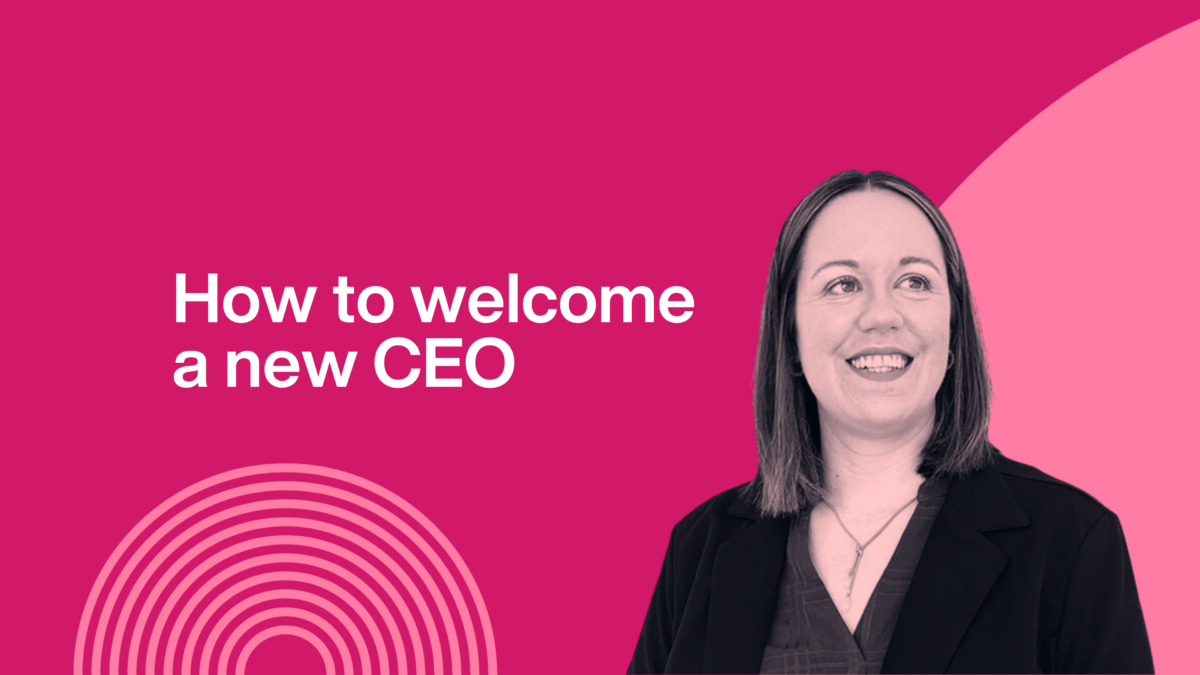As a board member, it can be an exciting time to welcome a new CEO but is also a period that you want to ensure goes smoothly to set the team and the organisation up for success. Having recently welcomed a new CEO to the board at Child Action North West (CANW), Rachel Covey, Consultant at GatenbySanderson’s not-for-profit practice shares some key insights from her experience as a board member below.
Rachel Covey,
Board member, Child Action North West,
and Consultant, GatenbySanderson
Recognise that change is hard but it’s always an opportunity
It is important to recognise that a CEO transition is not the same as onboarding, which is a formal, short-term, agenda-driven orientation program of briefings and meetings (Harvard Business Review). It is a process of interactions both formal and informal, planned and impromptu. Handled correctly, the process will begin when the board’s choice accepts the position and will last for months after they arrive.
In welcoming a new CEO, particularly if the incumbent was well regarded and has served a significant tenure, you will be forced to respond to change.
Prepare the board for what is to come through increased communication, giving both board members and the incoming CEO the opportunity to allay concerns, build trust, and ultimately inspire each other for what the future will bring.
Alison Stathers-Tracey
CEO, Child Action North West.“The previous CEO had been in role for almost 14 years and as such new CEO had to find the right balance with the board of retaining the importance of history and legacy, while addressing the thorny problem of designing a sustainable operating model that will stabilise the charity moving forwards.
Communication and joint planning have been critical in the early stages of change management, sharing the challenges and opportunities as early as possible reduced the risk of mistrust and delay in making the most informed decisions essential for success. Co-production with board members and the CEO has been vital to achieve strategic solutions that can only bring added value especially when an organisation has not needed to change for an extended period and decisions are pressured. Having a shared sense of urgency and ownership of challenges give rise to a sense of trust and support.”
Remain laser-focused on share goals
Through getting to understand each other’s specific strengths, motivations and objectives beyond the broader mission of the organisation, you can build the strong and supportive culture needed to achieve your ambitions.
Lewis Baxter,
Vice Chair, Child Action North West.“Welcoming a new CEO is a crucial moment for any charity – local, regional or national. There are three core components to a comprehensive transition process.
First, the new CEO should have open conversations with all trustees collectively and individually, hold 1-to-1s with senior leaders and focus groups with the wider staff team and volunteers.
Second, it’s important that the CEO and board align on the charity’s mission and vision (where the charity is going and set strategic objectives) and align on core values (the guiding principles through which decisions are made). This could be facilitated by someone independent of the organisation.
Finally, the CEO should have the opportunity to observe the delivery of services and engage with beneficiaries. A successful transition process is one built upon clear communication, mutual trust and understanding.”
Do the simple things well
As busy and often over-committed people, it is critical that boards and CEOs understand what is expected and when to allow space for critical thinking and effective decision making.
“I have found that simplifying our meeting and reporting structure along with taking on an experienced Clerk to the board, has enabled our board members and CEO to easily find what we need and understand the context of information presented. By ensuring items requiring decision are marked as such and using a digital document sharing platform, we can readily get to the detail needed in a timely fashion to be ready for meetings. It is also clear when a special meeting may be required to respond to issues arising between meetings.
I have really enjoyed my learning journey in seeing things from the other side. As a former charity employee, I would present to board so becoming a Trustee has given me greater empathy with our CEO and has given me much greater insight into the experience of GatenbySanderson candidates when taking on a board or executive position.”
When the transition is done effectively, the whole organisation is prepared for a new leader with a change agenda, and the incoming leader is more tuned in to the cultural changes that will be necessary to support this change. The transition establishes a solid path toward productive relationships between the CEO and key stakeholders—including, most crucially, board members.
Recognising what the organisation needs from a new CEO as part of the appointment process is a first step to success. At GatenbySanderson we offer stakeholder engagement to help build consensus, skills audit and gap analysis, psychometric profiling for candidates, and inclusive panel training to support fair assessment of applicants.
Explore how GatenbySanderson can support your transition to new leadership or help to understand and address board dynamics. Contact info@gatenbysanderson.com

